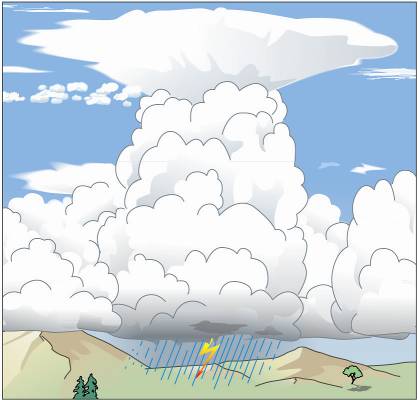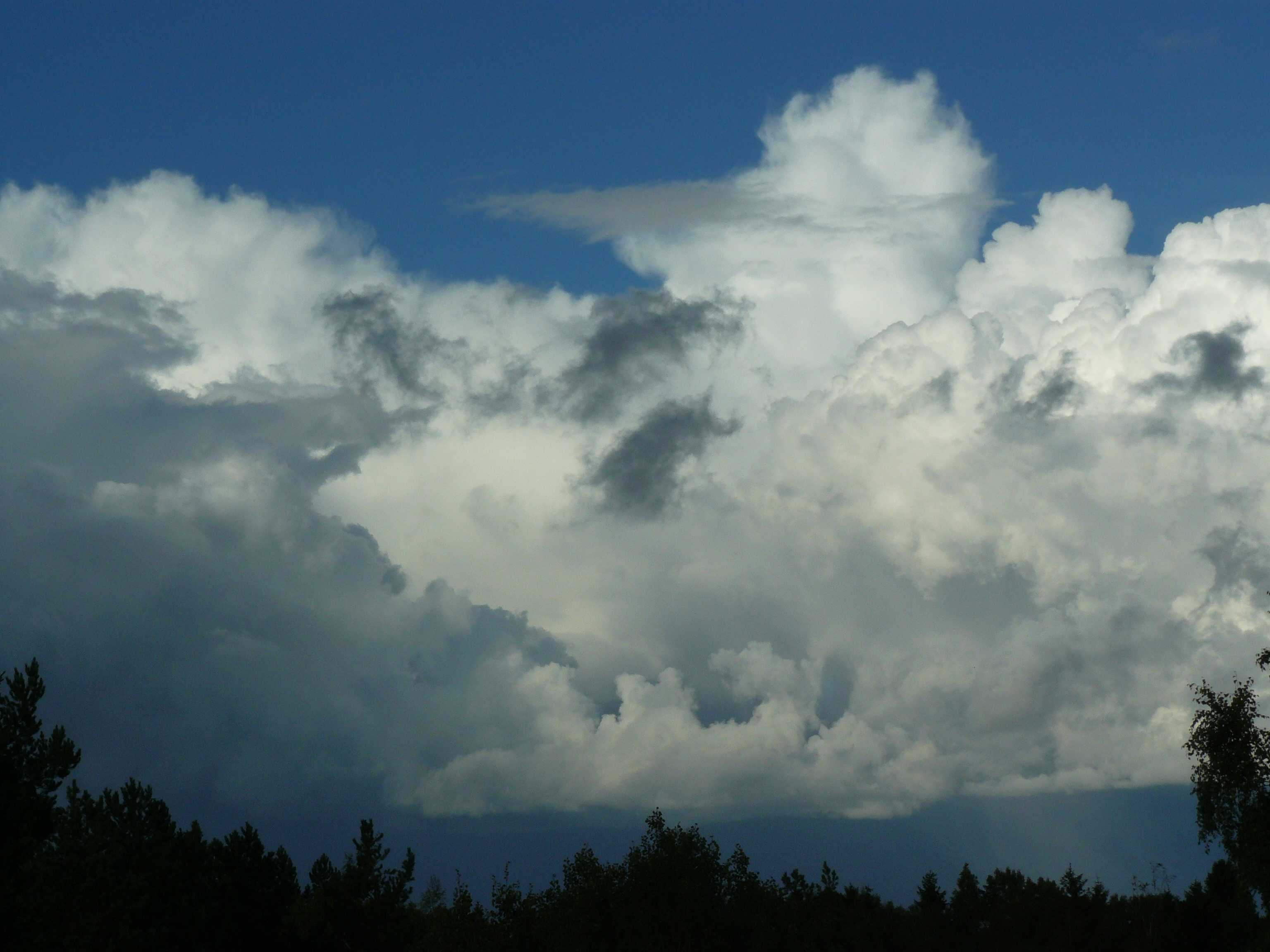CL = 9
(Section 2.8.2.1.9)(a) TECHNICAL SPECIFICATION
Cumulonimbus capillatus (often with an anvil), with or without Cumulonimbus calvus, Cumulus, Stratocumulus, Stratus or pannus.
(b) EXPLANATION
(i) Cumulonimbus capillatus evolve from Cumulonimbus calvus. They are distinguished from Cumulonimbus calvus (CL = 3) by the appearance of their upper portions:
- The upper part of a Cumulonimbus capillatus shows a clearly fibrous or striated structure and frequently has a form resembling that of an anvil, a plume or a huge mass of hair;
- A Cumulonimbus calvus has no fibrous or striated parts.
(ii) Among the numerous possible cases covered by CL = 9, the following two are frequently observed:
- Cumulonimbus with a clear-cut horizontal base that is sometimes partially or totally hidden by pannus occur during hot, thundery days at middle latitudes and, frequently, in the humid zones of low latitudes;
- Cumulonimbus with the base frayed by a fairly strong wind and occasionally accompanied by pannus.
(iii) The cirriform parts of Cumulonimbus capillatus may become invisible when the cloud passes over the point of observation. It should nevertheless be classified as Cumulonimbus capillatus on the basis of its history, coding CL = 9.
(iv) The same applies when the cirriform parts of Cumulonimbus capillatus become hidden by other clouds.
(v) The occurrence of lightning, thunder or hail sometimes provides the only indication of the presence of Cumulonimbus. In this case, it is not possible to decide whether the cloud belongs to the species calvus or capillatus, the coding is, by convention, CL = 9.
(vi) Sometimes, when the 0 °C (32 °F) level is low, the fibrous structure of the upper part spreads through the whole Cumulonimbus capillatus, which then degenerates into a cirriform cloud mass (CH = 3), the coding CL = 9 is maintained as long as at least one Cumulonimbus remains in sight or is known to be present.
(vii) Cumulonimbus capillatus sometimes produces cloud masses that may become detached from it and assume an independent identity. Very often, they have the appearance of Cirrus, Altocumulus, Altostratus or Stratocumulus.





